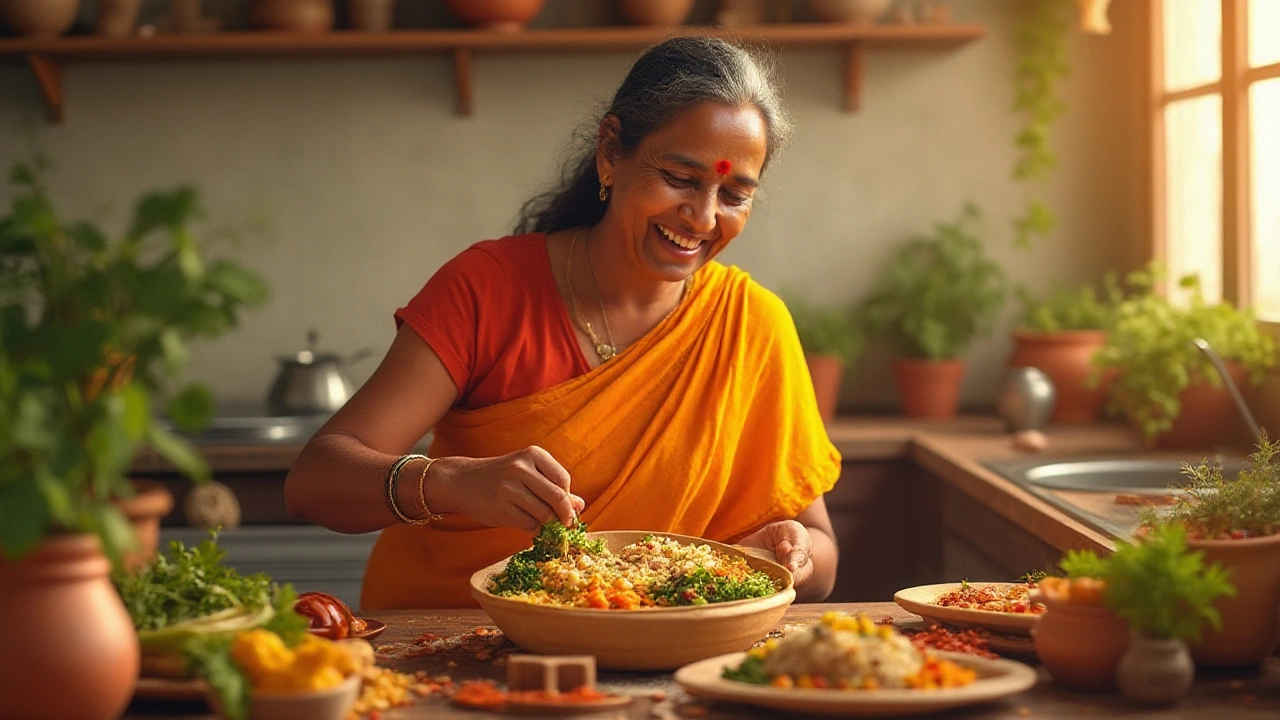Discover the best foods and eating habits for a 55-year-old woman aiming to lose weight. Get practical, science-backed nutrition tips tailored to women in midlife.
Read MoreHealthy Diet for Women 55: Simple Food Tips to Boost Energy & Wellness
If you’re 55 and looking for a diet that actually works, you’re not alone. At this age your body starts asking for different things – stronger bones, steadier blood sugar, and a little extra energy to keep up with grandkids or hobbies. The good news? You don’t need a complicated plan or pricey supplements. Just a few everyday choices can make a big difference.
Focus on Whole Foods, Not Fads
Forget the trendy detox teas and magic pills. Real nutrition comes from whole foods you can see, touch, and taste. Aim for a colorful plate: leafy greens, bright veggies, fresh fruit, whole grains, lean proteins, and healthy fats. When you fill half your plate with vegetables, you automatically lower calories while loading up on fiber, vitamins, and antioxidants that protect against age‑related inflammation.
Try swapping white rice for brown rice or quinoa a couple of times a week. Those grains keep you full longer and give you steady energy without the blood‑sugar spikes that can lead to cravings later in the day.
Key Nutrients Every 55‑Year‑Old Woman Needs
Calcium & Vitamin D – Bone health becomes a top priority after 50. Include low‑fat dairy, fortified soy milk, or leafy greens like kale and bok choy. A short walk in the sun or a 10‑minute daily exposure helps your body make vitamin D, which works hand‑in‑hand with calcium.
Protein – Muscle loss speeds up with age, so aim for about 1 gram of protein per kilogram of body weight daily. Good sources are fish, poultry, beans, lentils, and Greek yogurt. If you’re vegetarian, combine beans with whole grains for a complete amino‑acid profile.
Omega‑3 Fatty Acids – These healthy fats lower heart disease risk and support brain health. Add a serving of fatty fish like salmon or mackerel twice a week, or sprinkle ground flaxseed or chia seeds on oatmeal or smoothies.
Fiber – Fiber keeps digestion smooth and helps manage cholesterol. Aim for 25‑30 grams a day by eating beans, berries, whole‑grain breads, and plenty of vegetables.
Don’t forget to stay hydrated. Older adults often feel less thirsty, yet water is essential for joint lubrication and kidney function. Keep a bottle handy and sip throughout the day.
Now, let’s talk practical meal ideas that fit into a busy schedule.
Breakfast: Overnight oats made with rolled oats, almond milk, a spoonful of chia seeds, and fresh berries. It’s ready when you are and packs fiber, protein, and antioxidants.
Lunch: A big salad with spinach, cherry tomatoes, cucumber, grilled chicken or chickpeas, topped with a drizzle of olive oil and lemon. Add a slice of whole‑grain bread for extra carbs if you need more energy.
Dinner: Stir‑fried veggies (broccoli, bell peppers, snap peas) with tofu or shrimp, served over brown rice. Season with ginger, garlic, and a splash of low‑sodium soy sauce for flavor without excess salt.
Snacks can be simple: a handful of nuts, a piece of fruit, or veggie sticks with hummus. These choices keep blood sugar stable and curb cravings.
Finally, listen to your body. If a certain food leaves you feeling sluggish, try a different option. Everyone’s metabolism changes with age, and the best diet is the one you can stick to long term.
Adopting these habits doesn’t require a total lifestyle overhaul. Start with one meal a day, swap out a processed snack for a fruit, and watch how quickly you feel more energetic and confident. Your 55‑year‑old self will thank you for it!"





